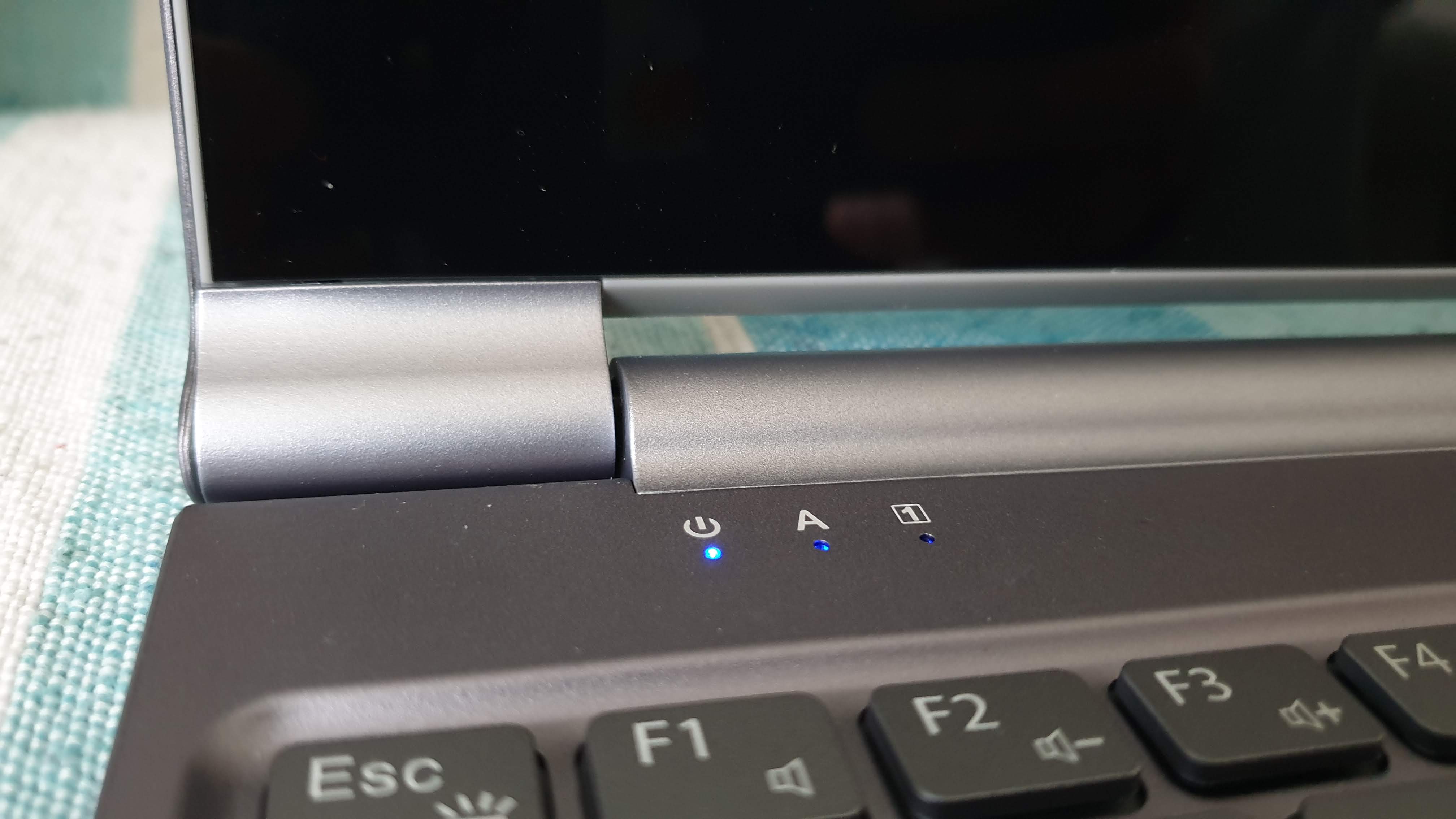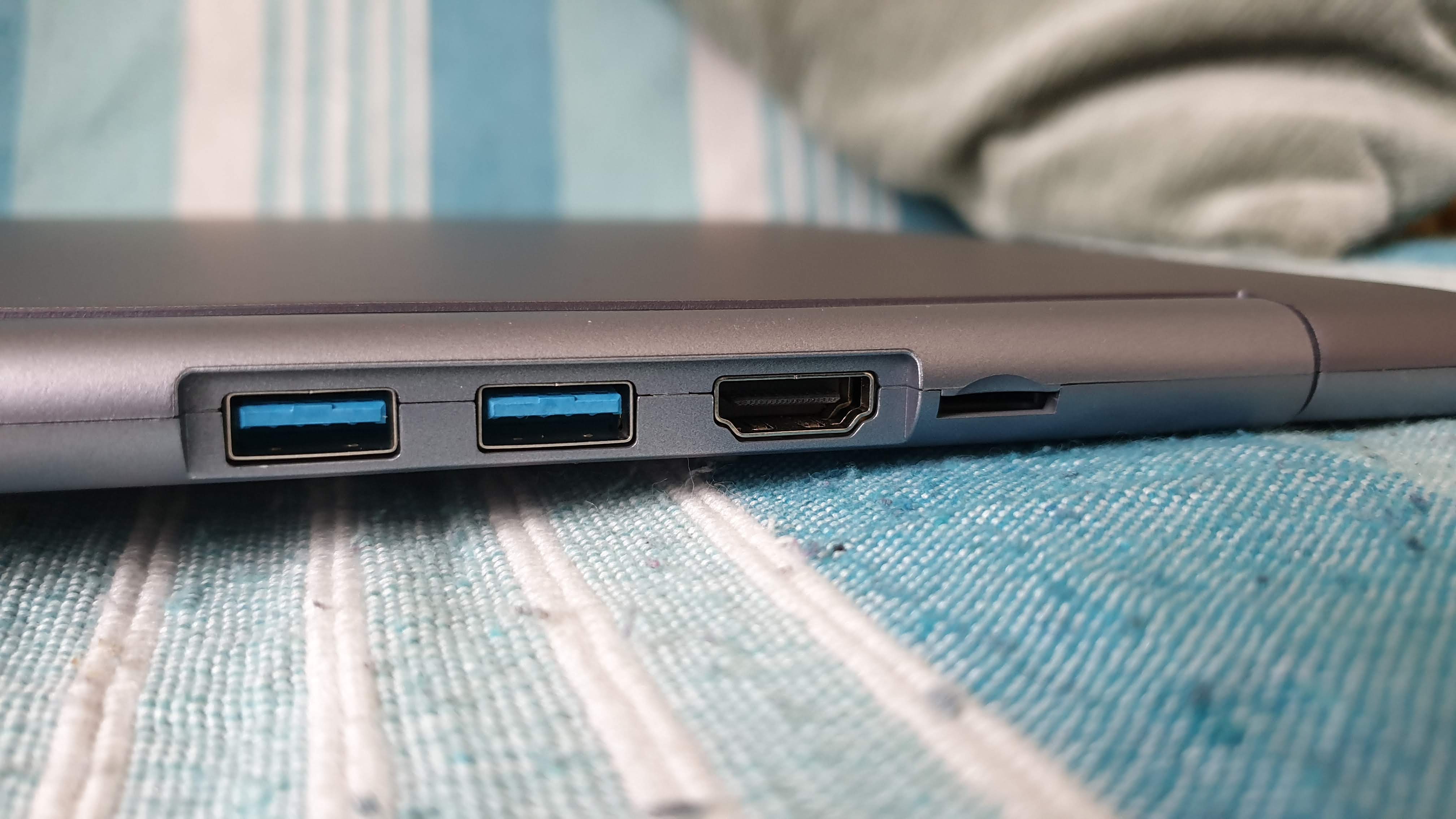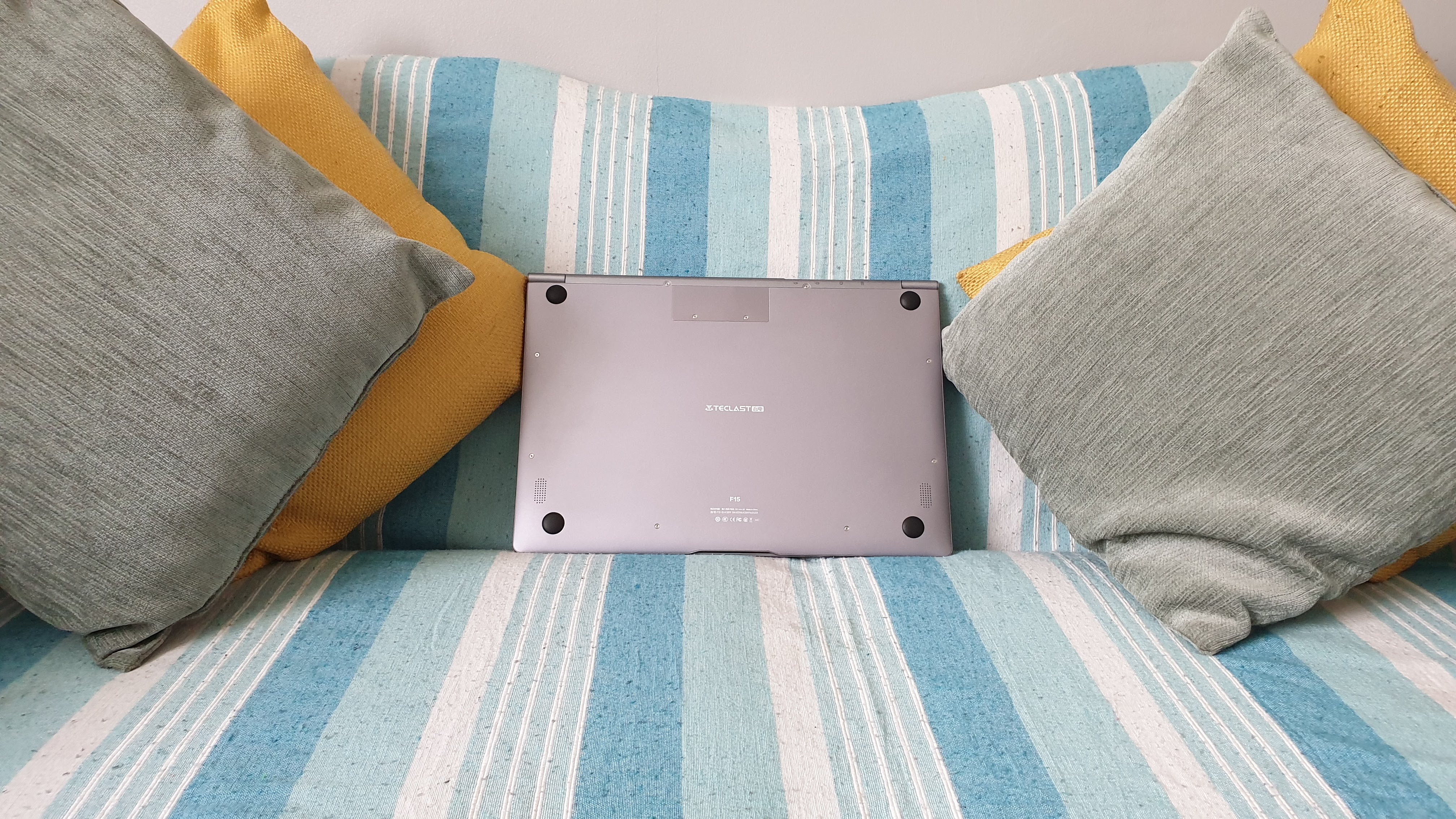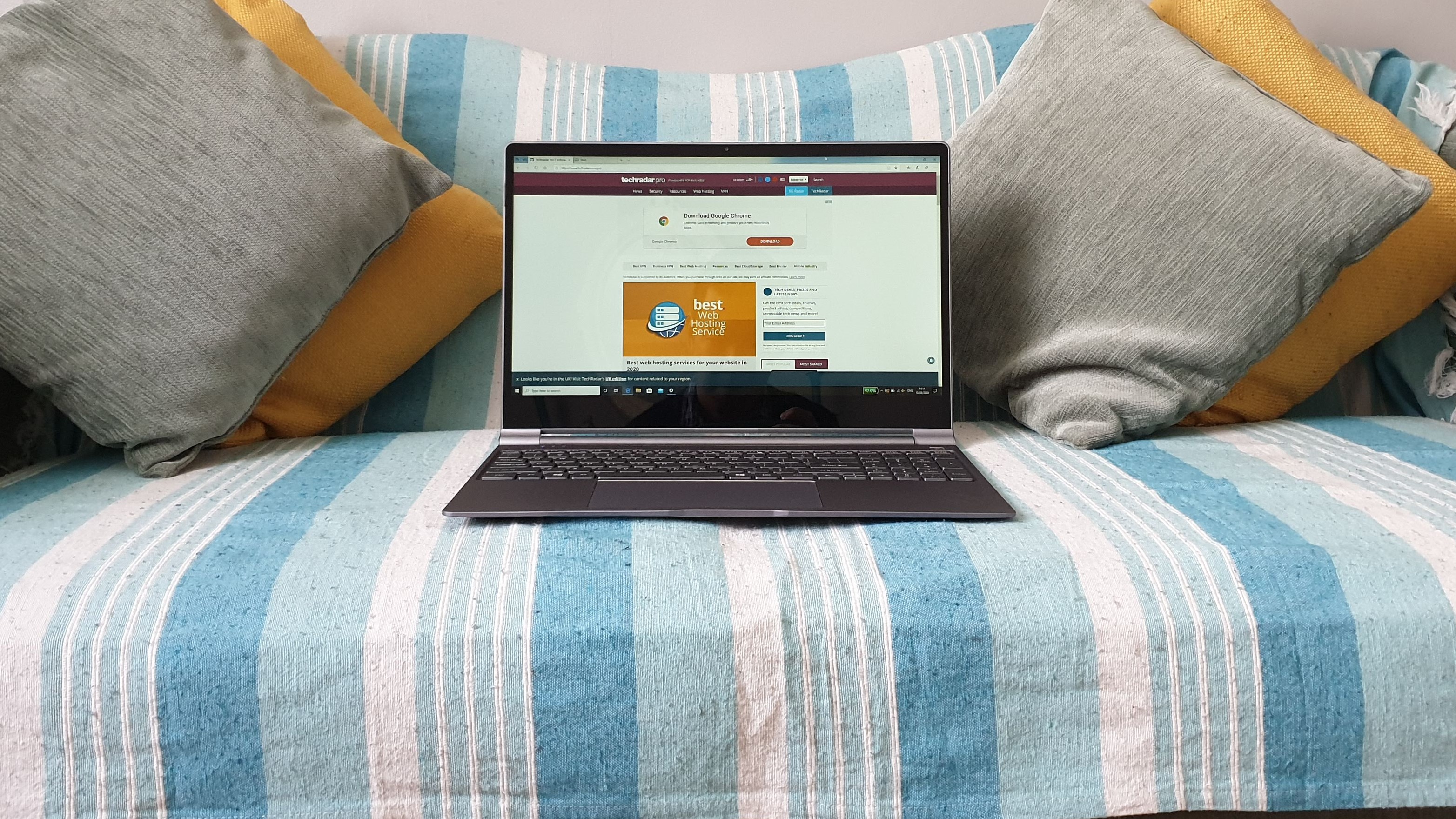TechRadar Verdict
The Teclast F15 will appeal to those who want a laptop with a premium design with a decent performance, excellent battery life and a dedicated numeric keypad. Just bear in mind that after sales will likely be an issue if shipped from China.
Pros
- +
Good performance
- +
Great design and finish
- +
Outstanding battery life
- +
Good value for money
Cons
- -
Questionable port placement
- -
No Type-C USB port
- -
No fingerprint reader
Why you can trust TechRadar
This laptop was provided by the vendor and sold for as little as $370 from Geekbuying at the time of writing. The price excludes local taxes or courier fees but should include postage to most territories by DHL and the exact in local currency will be dynamically at checkout.
The F15 Eagle is one of the US Air Force’s most iconic warplanes, one that managed to strike the right balance between performance and design. With its own F15, Teclast, one of the better known small Chinese laptop vendors, probably aimed for something not entirely dissimilar when it was launched early 2019; a recent adjustment in pricing put it back in the limelight and on our radar. Time to take it for a spin to see what’s inside.
- Want to buy tech from online Chinese retailers? Read this first.

Design
The 15.6-inch form factor has for long been relegated to the entry-level, “boring” status for two main reasons. For too long it was seen as the “safe” form factor as it allowed vendors to pack an optical drive (remember DVDs?) and a physical numeric keypad which is seen as a must have for many small businesses.

And while a lot of the competition from bigger vendors will stick to a very bland plastic finish, the F15 is all but bland and actually stands out thanks to an aluminum chassis with a gun metal finish. Engineers have opted for a 180 degrees hinge that allows the user to lay the laptop flat on, say, a table.

Great but not only doesn’t this have any usefulness, it also hinders access to the ports, all of which are located at the rear of the laptop, an interesting but flawed design.

Yes, except for the power connector and the 3.5mm audio plug, all the other ones - two USB 3.0 ports, a HDMI one and a microSD card slot - are located at the back. No extra Type-C USB port and no Ethernet ports, which is a bit of a disappointment given the real estate available.

At 360 x 250 x 13mm for a weight of just over 1.8Kg, it is surprisingly portable for something that has a large footprint and is very thin indeed. Despite this, not once did we notice any flex in the metal body.

Hardware
At the heart of the F15 is a quad-core processor, the Intel Celeron N4100 which is one of the more powerful Celeron models and is surprisingly nippy even by modern standards. It is about 60% as powerful as an 8th generation Core i3 processor, so not that bad. The graphics subsystem is handled by Intel’s very own UHD Graphics 600.
Sign up to the TechRadar Pro newsletter to get all the top news, opinion, features and guidance your business needs to succeed!
Here are the full specs of the Teclast F15 laptop configuration sent to TechRadar Pro for review:
CPU: Intel N4100
Graphics: Intel UHD Graphics 600
RAM: 8GB VLSI DDR4
Screen: 15.6-inch 1920 x 1080 resolution
Storage: Teclast NA850-2280 256GB SATA
Ports: 2 x USB 3.0, 1 x HDMI, audio jack, MicroSD card reader
Connectivity: Intel Wireless-AC 3165, 802.11ac Wi-Fi, Bluetooth
Camera: 1MP front camera
Weight: 1.8kg
Size: 360 x 250 x 13mm (H x W x D)
Battery: 43Whr
By its sides are 8GB LPDDR4 memory which should help with battery life, as well as a 256GB SATA SSD built by Teclast, one which can be easily swapped if needed. The rest of the specification includes 802.11ac Wi-Fi, a 1-megapixel camera, a 43WHr battery and a pair of downward-firing speakers. There’s also a compact 12V3A (36W) power supply unit.

Performance and in use
We can’t underline how big of a design flaw the decision to put the ports at the back is. Any user who has to regularly use the ports at the rear will soon be frustrated by the need to pivot the laptop to have visual access to the said connectors. The power connector is located on the side which mitigated our annoyance.
Here’s how the Teclast F15 laptop performed in our suite of benchmark tests:
Passmark: 1192.2
Passmark CPU: 1940.7
CPU-Z: 175 (single-thread); 584 (multi-thread)
Geekbench: 398 (single-core); 1014 (multi-core); 1153 (compute)
Cinebench CPU: 371
CrystalDiskMark: 543MBps (read); 472MBps (write)
Novabench: 660
Atto: 529MBps (read, 256mb); 456MBps (write, 256mb)
AJA: 489MBps (read); 432MBps (write)
Windows Experience Index: 3.5
The screen is one of the laptop’s highlights; its bezels are thinnest on the sides (down to 7mm) and it sports a screen-to-body ratio of 82% which explains why, in the world of 15.6-inchers, it is one of the smaller models. With a full lamination, a full HD resolution and IPS technology, it is reasonably bright with a good contrast ratio and delivers punchy colours.
The keyboard is a backlit model and offers a dedicated physical numeric keypad, a boon for bean counters and ASCII code lovers. A big laptop also usually means an enlarged touchpad and truth be said, the one on the F15 is exquisite to use albeit without a fingerprint reader. In both cases, the input peripherals performed well, being more than adequate for their assigned tasks; responsive without being too noisy or spongy.
As for performance, it was pretty much what we’d expect; slow on single thread tasks and making up for it on multi-threaded ones thanks to its four cores. Battery life was excellent at nearly 400 minutes, one of the best we’ve recorded for that form factor; the storage subsystem performed equally well, hitting the limits of the SATA interface.
The competition
The most potent rival to the F15 is the KUU K1, one laptop that we intend to review shortly. At $411 at Gearbest, it is far more expensive but has a few things going for it; a more powerful CPU, the Core i5-5257U, powers it and there’s even a fingerprint scanner integrated in the touchpad.
Don’t discount the Lhmzniy A8 from the same online retailer. It sports a slightly slower Celeron J3455 CPU but comes with a 512GB SSD, twice that of the F15 for a retail price of only $295. It doesn't have a numeric keypad but gets an Ethernet connector and, to be honest, at that price, will have a lot of its shortcomings forgiven.
The nearest equivalent laptop from the US is the Dell Inspiron 15 3593 which retails for $430 direct from Dell. It comes with a 10th generation Core i3 processor, which is about twice faster than the N4100 powering the F15. On the other hand, with a 1TB hard disk drive and only 4GB system memory, it sure will struggle when it comes to multi-tasking scenarios.
Final verdict
For $370, you get a lot of laptop for your money and the F15 particularly shines when it comes to its battery life which at 6:25 is one of the best we’ve seen on a laptop of this size. We are disappointed by the location of the ports and the lack of a Type-C connector/fingerprint reader.
Overall, it is a pretty good laptop if you’re looking for one that has a big battery life and a dedicated numeric keypad. We urge you to look around though as prices have been moving up and down over the past few weeks as demand and supply fluctuate.
Businesses though may be wary of the fact that after sales might be patchy given that it ships directly from China. The F15 is available from Amazon for those looking for an added piece of mind though at a higher price.
- We've also picked out the best budget laptops of 2020

Désiré has been musing and writing about technology during a career spanning four decades. He dabbled in website builders and web hosting when DHTML and frames were in vogue and started narrating about the impact of technology on society just before the start of the Y2K hysteria at the turn of the last millennium.
